The washing machine gets stuck on the spin cycle
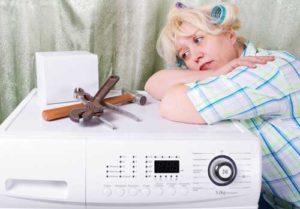 It is clear that the washing machine freezes on the spin cycle for a reason, something happened to it, but it can be difficult to understand what exactly. Usually in such a situation, even the self-diagnosis system helps little. An error like “problem with the spin cycle” pops up, but what the problem is and what caused it, the electronic system of the washing machine is often silent about this. You will have to deal with the problem yourself, and we will help in any way we can.
It is clear that the washing machine freezes on the spin cycle for a reason, something happened to it, but it can be difficult to understand what exactly. Usually in such a situation, even the self-diagnosis system helps little. An error like “problem with the spin cycle” pops up, but what the problem is and what caused it, the electronic system of the washing machine is often silent about this. You will have to deal with the problem yourself, and we will help in any way we can.
What could have happened?
As you know, in an automatic washing machine, from the moment the washing program starts, many different processes occur. First, the washer pours water into the tank, washes off the powder that is in the pre-wash compartment, and then slowly turns the drum, so the pre-wash takes place. Next, the washing machine drains the used water and draws in new water, washing away the second portion of powder from the main wash compartment. The main wash ends, the machine drains the dirty water again, then picks up clean water for rinsing.
In modern washing machines, one or another washing program may include a double rinse. This means that the washer will rinse the laundry, then drain the water, add water again, and rinse again.
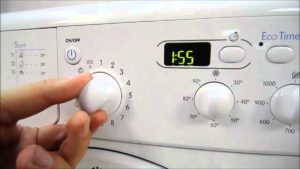 Having completed the rinse, the washing machine drains the water again and begins the final action of the program, namely spinning, and this is where the problems begin. For some reason the machine begins to behave unnaturally; instead of spinning the drum, it freezes after a short time. It’s good if at the same time it produces some kind of system error, leading the owners to think about the cause of the problem, but it happens that the washing machine does not produce any errors.In this case, logical thinking and knowledge of the structure of a modern washing machine will help.
Having completed the rinse, the washing machine drains the water again and begins the final action of the program, namely spinning, and this is where the problems begin. For some reason the machine begins to behave unnaturally; instead of spinning the drum, it freezes after a short time. It’s good if at the same time it produces some kind of system error, leading the owners to think about the cause of the problem, but it happens that the washing machine does not produce any errors.In this case, logical thinking and knowledge of the structure of a modern washing machine will help.
First of all, you need to dismiss the most basic reasons that are not related to a technical malfunction. Rather, these reasons can be associated with incorrect user actions, namely:
- overloading the washing machine drum with laundry;
- the item loaded is too heavy or too bulky;
- insufficient drum loading;
- mistakenly selected the wrong washing program;
- a foreign object has entered the tank and jams the drum, preventing it from spinning at high speed.
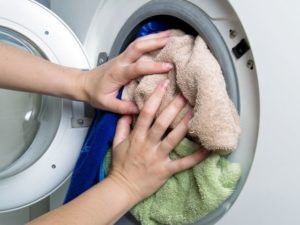 When we overload the washing machine with laundry, the clump of laundry creates an imbalance in the drum. When this very drum begins to spin at high speed, the laundry that has managed to bunch up in a lump may well destroy the drive mechanism. To prevent this from happening, the washing machine urgently stops the program and spinning is not carried out until the drum is loaded correctly.
When we overload the washing machine with laundry, the clump of laundry creates an imbalance in the drum. When this very drum begins to spin at high speed, the laundry that has managed to bunch up in a lump may well destroy the drive mechanism. To prevent this from happening, the washing machine urgently stops the program and spinning is not carried out until the drum is loaded correctly.
The washing machine can freeze when the drum is not loaded enough or when an item that is too bulky is loaded into the drum. A modern system recognizes this and stops spinning. The worst thing is if the spin stops due to a foreign object stuck in the tank. Such an object can not only jam the drum, but also damage the tank, causing the washing machine to start leaking water. Problem solution: needed immediately get a foreign object.
Once the above reasons have been eliminated, you can think about a technical malfunction. We warn you right away that searching for a technical fault that could lead to problems with the spin cycle often involves disassembling the automatic washing machine.If this process scares you and you feel unsure of your abilities, it is better to delegate this task to a master. You may not save money, but you will definitely save time and nerves. If you are determined to bring the matter to its logical conclusion, continue to carefully read this publication.
Drive mechanism
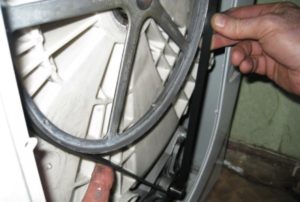 Very old and heavily worn washing machines often have problems with bearings. Due to damaged bearings, the drum produces a very strong characteristic sound of metal grinding when rotating. Since the rotation of the drum is difficult, it cannot reach the required speed and, as a result, the washing machine simply freezes during the spin cycle. There are two ways to solve the problem: throw away the old washing machine and buy a new one, or change the bearing. The second method will require a lot of patience, effort and work from you.
Very old and heavily worn washing machines often have problems with bearings. Due to damaged bearings, the drum produces a very strong characteristic sound of metal grinding when rotating. Since the rotation of the drum is difficult, it cannot reach the required speed and, as a result, the washing machine simply freezes during the spin cycle. There are two ways to solve the problem: throw away the old washing machine and buy a new one, or change the bearing. The second method will require a lot of patience, effort and work from you.
If the bearings are intact, there is no noise, but the spin cycle still does not start, you need to carefully listen to how the washer works just before it freezes. If you hear a slight whistle and the drum speed suddenly drops, it’s a good idea to check the drive belt. When the drive belt stretches, it begins to slide along the pulley when the drum speed increases sharply, causing the speed to begin to drop. In this case, the belt must be changed immediately. How to do it?
- We remove the back wall of the washing machine by first turning it off and pulling it out to a free place.
- Remove the old drive belt by grasping it with your hand and turning the drum pulley.
- We put the new drive belt on the engine pulley, and then, gradually rotating the drum pulley, we tighten the belt on it.
- We check how well the belt is seated on the pulleys, and then reassemble the washing machine in the reverse order.
Note! Since the back wall of the washing machine has already been removed, it would be a good idea to also check the pulleys themselves for deformations and manufacturing defects. Pay special attention to the drum pulley; the slightest burr or curvature will negatively affect the drive belt, damaging it.
Motor and tachometer
If you have checked the drive mechanism and are sure that everything is in order, it is worth checking the motor with the Hall sensor. It often happens that a brushed motor simply loses power over time due to worn carbon brushes. A “weakened” engine, naturally, is not able to spin the drum of the washing machine to the required speed for spinning to take place, and then everything that we have already described above happens. So, let's check and change the carbon brushes.

- As in the case of replacing the drive belt, remove the back cover of the washer.
- We pull off the drive belt that is interfering with us.
- We pull off the wires going to the motor contacts, just don’t forget to remember their location.
- We unscrew the screws that secure the engine to the mountings that look like paws.
- Push the engine forward a little.
- Next, pull the released engine down a little and remove it.
- There are small screws on the sides of the motor housing that need to be unscrewed, as they hold the carbon brushes.
- We take out the brushes and check how worn they are.
Even if only one brush is severely worn out, and the second is intact, both brushes must be replaced.
What's next? Next we will check the Hall sensor. Such sensors fail rarely, but nevertheless, this happens. The tachometer in the washing machine controls the engine speed; if it is broken, problems with spinning will definitely arise. Checking this sensor and how to find it is described in the article Tacho sensor in a washing machine.
Control module
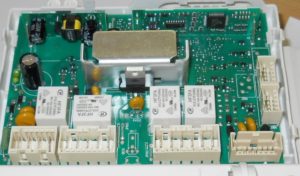 One of the most unpleasant breakdowns of a washing machine is considered to be the breakdown of the electronic module. The electronic module is a rather complex part; to understand what exactly is broken in it, you will need a lot of knowledge and practical skills in working with electronics. If you do not have such skills and knowledge, it is better to direct your energy to finding a good technician who will find out why the program suddenly began to go astray and the machine does not want to spin the laundry.
One of the most unpleasant breakdowns of a washing machine is considered to be the breakdown of the electronic module. The electronic module is a rather complex part; to understand what exactly is broken in it, you will need a lot of knowledge and practical skills in working with electronics. If you do not have such skills and knowledge, it is better to direct your energy to finding a good technician who will find out why the program suddenly began to go astray and the machine does not want to spin the laundry.
Self-repair, in this case, will cause more harm than good and will most likely result in additional expenditure of effort, time and money, and the result will most likely be disastrous. Be prudent and always “carry your own burden.”
In conclusion, we note that if the washing machine freezes during the spin cycle, do not rush to sound the alarm. Restart the program a couple of times, check how the laundry is folded in the drum and how much of it is loaded. Check the machine for blockages, and only then think about what the “home assistant” might have broken down. Good luck!
Interesting:
3 reader comments
Add a comment Cancel reply
Categories
Washing machine repair


For buyers

For users

Dishwasher






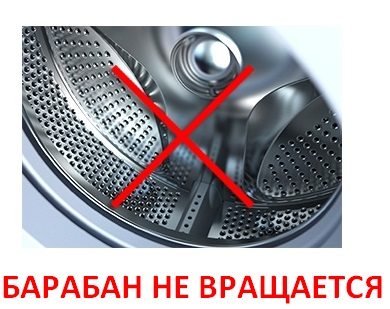










The washing machine does not wash well, but in spin mode it starts spinning faster and the speed immediately drops. It's as if she's debating whether to spin or not. I think I need to check the brushes. Thank you for the article. By the way, my car is Crystal, 13 years old.
Hello, the indicators are blinking and the drum is spinning slowly.It stopped on the spin cycle and everything was blinking. There is still water inside, what should I do?
Good evening, I have a Skyworth car. In the rinse + spin mode, it washes for up to 14 minutes. And time freezes, rinses, but the time does not switch. What could be the problem?